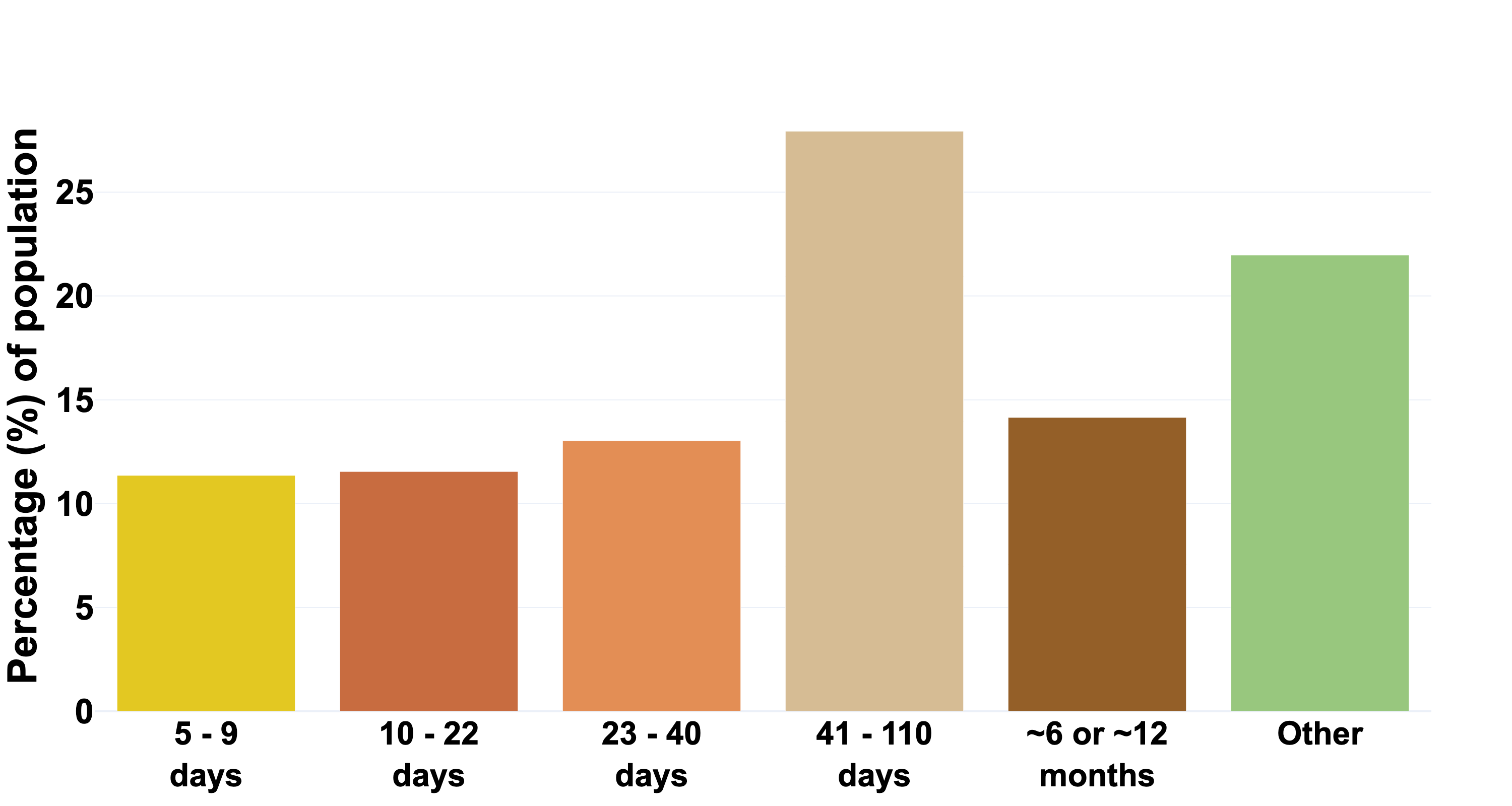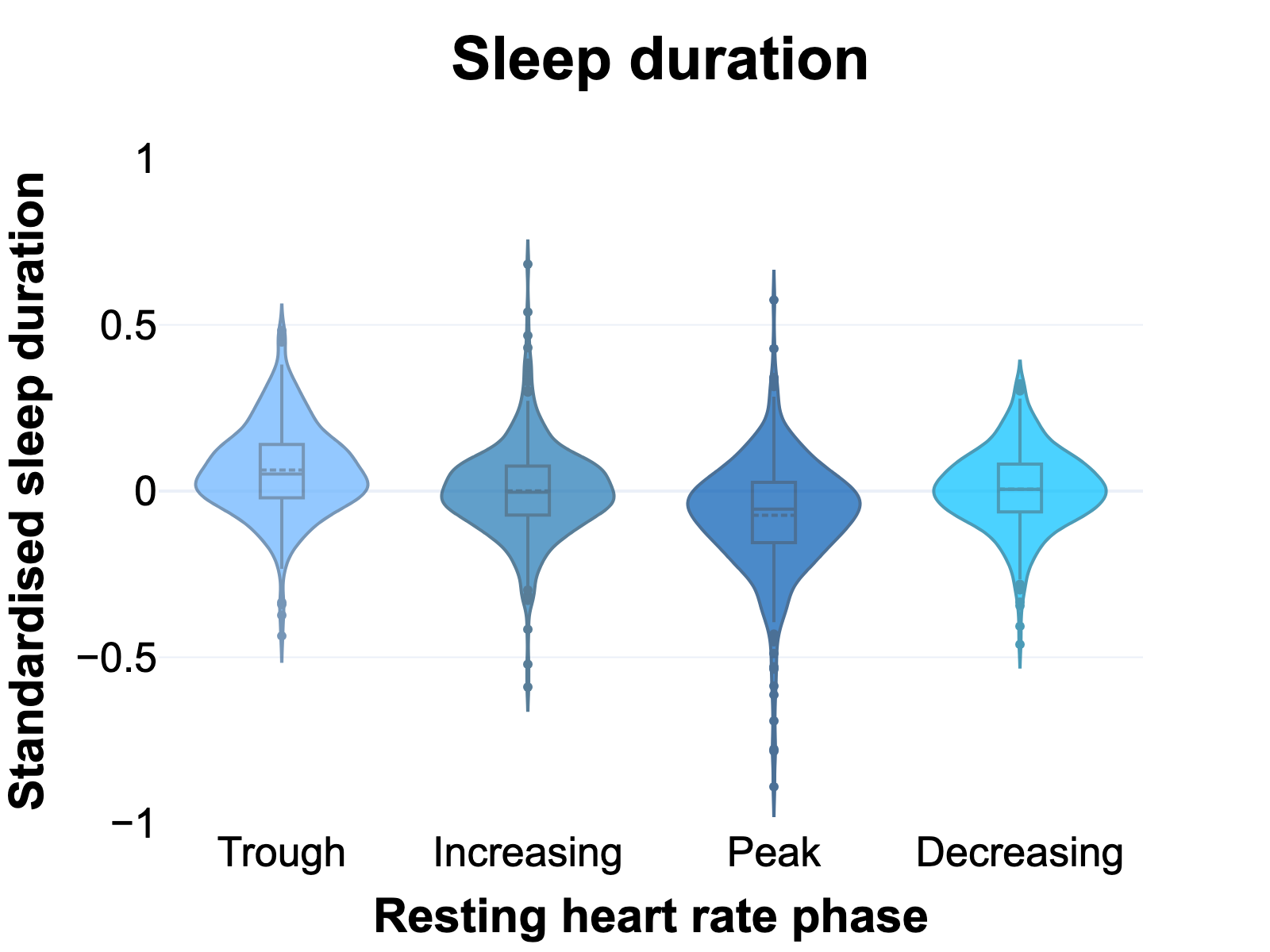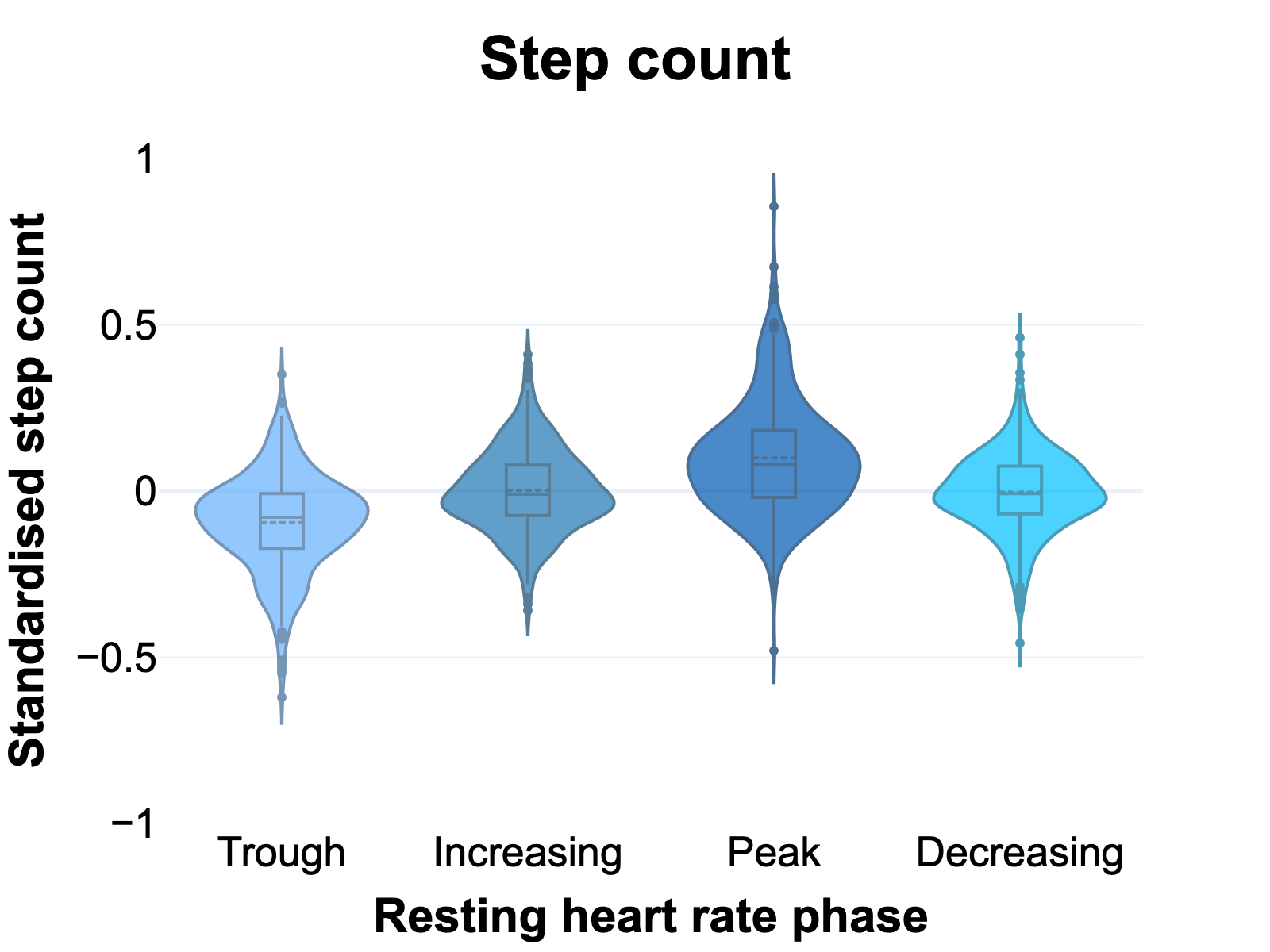What are multiday rhythms?
Cyclic rhythms are present throughout human biology, most prominently the 24-hour circadian rhythm, and hormonal
rhythms
like the 28-day menstrual cycle. These rhythms are thought to be initiated from within the body, from
internal clocks including the brain's main timekeeper, the hypothalamus, alongside smaller timekeepers in
different organs,
cells and tissues. They are also guided by environmental cues, including light, food, exercise and temperature.
Just like the 24-hour circadian rhythm, there is growing evidence for the existence of longer term multiday
rhythms in human physiology. For example, there is evidence that certain hormones and physiological processes
follow slower fluctuations and patterns, often at weekly, monthly or seasonal timescales. In particular,
research done by the Rhythms in Physiology (RiPL) lab has shown that resting heart rate fluctuates in multiday
rhythms. These rhythms appear to be linked to various aspects of human health, including sleep duration,
activity levels and even seizure likelihood in people with epilepsy. RiPL's research of a 500 person Fitbit
dataset (NetHealth, 2015-2019) has shown between 60% and 70% of people have a significant multiday rhythm in
their resting heart rate. In most cases, these rhythms were not linked to obvious external
environmental factors, such as the day of the week or lunar cycle.
Of this population,
- 11% had a weekly rhythm.
- 12% had a multi-weekly rhythm.
- 13% had a monthly rhythm.
- 28% had a multi-monthly rhythm.
- 14% had a seasonal rhythm.
- 22% had a significant multiday rhythm of another length.

The correlation between multiday rhythms and sleep and steps
We also considered the correlation between these multiday rhythms, sleep duration and activity levels, indicated by step count. Using information from the smartwatch dataset, we segmented the multiday rhythms into four phases: peak, decreasing, trough and increasing, according to trends in resting heart rate data. The box plots below show the distribution of standardised sleep duration and daily step count, grouped by phase of each user's multiday rhythm.


- Statistically significant (p < 0.05) differences in activity levels (step count) were observed across all phases of the population's multiday rhythms, except between the increasing and decreasing phases.
- There is strong evidence (p < 0.0001) that individuals took less steps during the trough phase and more steps in the peak phase compared to all other phases.
- Statistically significant (p < 0.05) differences in sleep duration were observed across all phases of the population's multiday rhythms, except between the increasing and decreasing phases.
- There is strong evidence (p < 0.0001) that individuals slept more during the trough phase and less during the peak phase compared to all other phases
The future of multiday rhythm research
Long-term data needs to be collected from more people to continue learning how these rhythms affect the general population. This is facilitated by rhythmo.me. Learning more about multiday rhythms may lead to a better understanding of human physiology and eventually improve the way we treat episodic and chronic conditions (such as epilepsy and migraines) by using physiological rhythms to manage disease symptoms.
Read about the observational cohort study that formed the basis for rhythmo.me at:
"Multiday rhythms of heart rate are associated with seizure likelihood"
Karoly, Stirling, et al., eBioMedicine (2021), 72:103619
To find your multiday chronotype, and contribute to important research, upload your smartwatch data through the link below.
Discover your rhythm